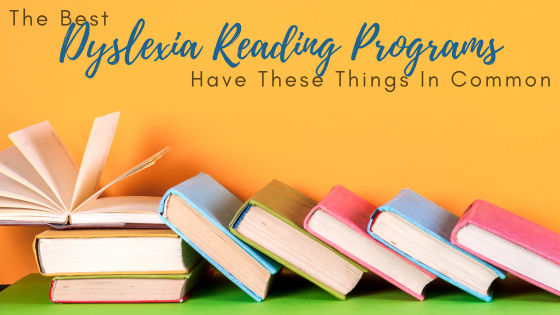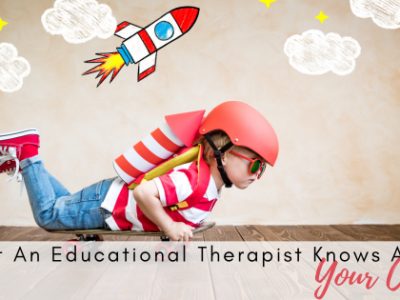
The Best Dyslexia Reading Programs Have These Things In Common
One of the most helpful things parents of students with dyslexia can do is seek the best help available for their kids. A dyslexia program can personalize the learning experience for students. Dyslexia therapists can do this by identifying students’ strengths and weaknesses and providing targeted interventions. Some of the most effective dyslexia reading programs can provide dyslexic students with tools and strategies they can use independently. Overall, a great dyslexia program can help students increase their proficiency in reading, which in turn can boost confidence and self-esteem. A successful dyslexia program can lead to not only great academic results, but a truly positive impact on students’ personal lives. Read on to learn more about what the best dyslexia reading programs have in common:
- Multisensory approach. When it comes to dyslexia programs, a multisensory approach means involving multiple senses through learning. Visual, auditory, and kinesthetic senses can be used through techniques such as using visual aids, doing hands-on-activities, and incorporating auditory feedback. Some programs use interactive software or incorporate physical movement into learning activities. The multisensory approach—with the simultaneous use of senses—can help students with dyslexia to improve their reading and writing skills. While dyslexia can make things like reading and processing language difficult, students may benefit from learning through these multisensory methods. The Orton-Gillingham approach, developed in the 1930s by Samuel Orton and Anna Gillingham, emphasizes this use of multiple senses in instruction. At Dyslexia on Demand, Certified Academic Language Therapists integrate visual, auditory, and motor processing with an explicit understanding of the structure of the English language. This multisensory method helps to provide a strong foundation in written language skills.
- Structured and explicit instruction. Successful dyslexia programs tend to follow a structured, systematic approach to teaching reading and writing skills. This method involves breaking down complex skills into smaller, more manageable steps, and then teaching these skills in a clear and structured way. Explicit instruction means that the steps are clearly explained and demonstrated for the student. The instructor also provides direct and explicit feedback to the student. This can include explicit instruction in specific areas such as:
- Phonemic awareness: the ability to identify and manipulate individual sounds in words.
- Phonics: the relationship between letters and sounds.
- Reading fluency: the ability to read with speed and accuracy.
- Writing skills
- Spelling skills
- Vocabulary
- Comprehension
Structured and explicit instruction aims to help students with dyslexia learn skills more efficiently and effectively. At Dyslexia on Demand, dyslexia reading programs focus on a systematic exploration of phonemes; the goal is to achieve accurate and automatic application of phonic skills.
- Ongoing assessment and progress monitoring. For effective dyslexia programs, measuring and evaluating student progress is essential. Ongoing assessment and progress monitoring both help to track the progress that each student is making. It also helps dyslexia tutors or therapists to adjust instruction as needed. This focus on evaluation helps to ensure that students are meeting their reading goals. The professionals at Dyslexia on Demand know that learning to read and improving language skills through dyslexia therapy should be a quantitative experience. Experts there use frequent data collection and feedback. Parents and students can expect frequent progress reports and data sharing.
- Individualized Instruction. The best dyslexia reading programs understand that each student with dyslexia is a unique learner with different strengths and challenges. Successful programs provide individualized instruction, tailored to the specific needs of each student. At Dyslexia on Demand, Certified Academic Language Therapists give expert, one-on-one or small-group intervention. This is done at a high frequency over a long period of time. The feedback and data collected from sessions with students is used to help structure and tailor individualized, personal therapy sessions.
- Trained and experienced instructors. The most successful dyslexia reading programs are led by well trained and highly experienced instructors. These professionals are able to understand the needs of students with dyslexia. They are also well versed in using their program’s methods and materials. Dyslexia on Demand operates a dyslexia therapy program which employs Certified Academic Language Therapists, also known as CALTs. These professionals are qualified to implement therapeutic grade, Orton-Gillingham based dyslexia intervention programs.
Is your student in need of reading help? Dyslexia on Demand can help to educate families about the best dyslexia reading programs as well as the differences between dyslexia tutoring and dyslexia therapy. The experts at Dyslexia on Demand are passionate about changing the lives and self-images of students who struggle with reading. Reach out or give us a call at 888-292-3906.







